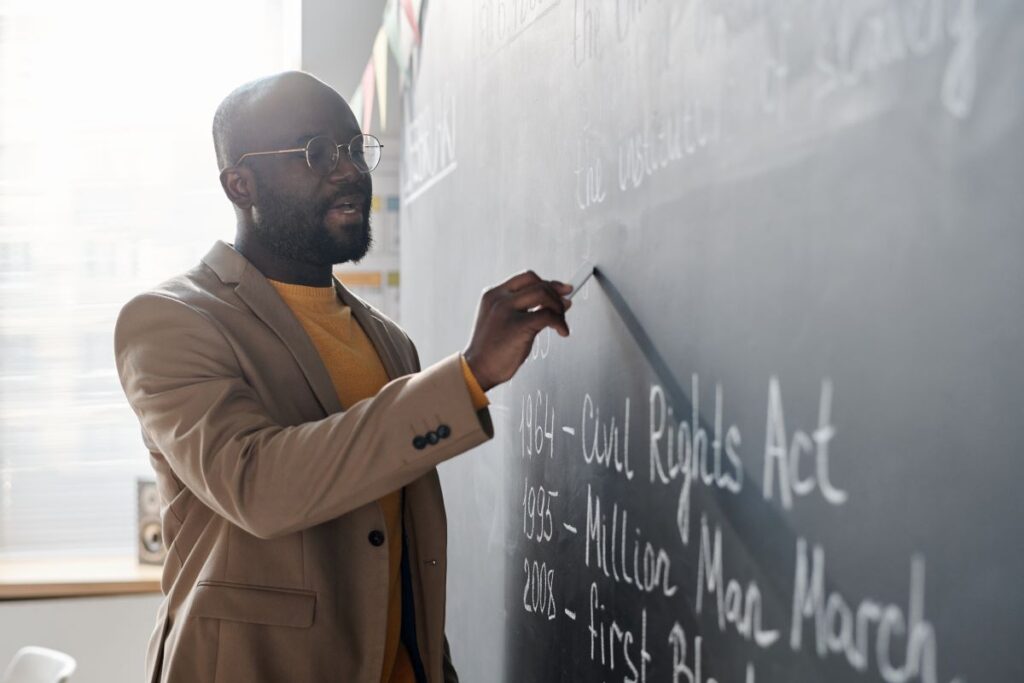Imagine a classroom where students don’t just memorize dates and names, but actively engage with the past, drawing connections to the present and envisioning the future. This isn’t a dream; it’s the reality crafted by passionate history teachers.
If you’re an educator contemplating a shift, or a seasoned administrator seeking to understand the pathway for your aspiring faculty, this article is for you. We’ll delve into the essential steps of how to become a history teacher, transforming a love for the past into a powerful force for shaping young minds.
More Than Just Dates: The Allure of History Education
At its core, teaching history is about storytelling, critical thinking, and fostering empathy. It’s about igniting curiosity about the human experience across civilizations, conflicts, and triumphs.
From the ancient world to contemporary events, a history educator guides students through narratives that explain how we got here and why it matters. It’s a deeply rewarding career, offering the chance to inspire a lifelong appreciation for learning and to cultivate informed, engaged citizens.
The Roadmap: How to Become a History Teacher
The journey to becoming a certified history teacher involves a blend of academic preparation, practical experience, and state-specific licensure. While the exact requirements can vary by state and even by district, a clear pathway emerges.
Foundational Education: Earning Your Bachelor’s Degree
The first crucial step on how to become a history teacher is obtaining a bachelor’s degree. For aspiring history educators, the most direct route is a Bachelor of Arts (BA) or Bachelor of Science (BS) in History. This foundational degree provides a comprehensive understanding of historical periods, research methodologies, and diverse historical perspectives.
However, a degree in a related social science field, such as Political Science, Sociology, or Economics, often with a significant concentration or minor in History, can also be a viable pathway. The key is to demonstrate a robust knowledge base in the historical discipline.
- Key Coursework: Expect to encounter courses in U.S. History, World History, European History, Ancient Civilizations, historical research methods, historiography, and specialized topics that pique your interest.
- Interdisciplinary Focus: Many programs encourage interdisciplinary studies, recognizing that history intersects with various other fields, enriching a teacher’s perspective.
Pedagogical Preparation: Teacher Preparation Programs
While a strong grasp of history is essential, knowing how to teach it effectively to K-12 students is equally critical. This is where teacher preparation programs come into play.
These programs, typically offered at the undergraduate or graduate level, focus on pedagogical theory, classroom management, curriculum development, and instructional strategies specific to history education.
- Undergraduate Programs: Many universities offer “dual certification” or “integrated” programs where students earn their history degree concurrently with their teaching certification.
- Post-Baccalaureate/Graduate Programs: For individuals who already hold a bachelor’s degree in history or a related field, a post-baccalaureate program or a Master of Arts in Teaching (MAT) is a common route. These programs are specifically designed to provide the necessary pedagogical training and supervised teaching experience.
- Curriculum Focus: Expect courses on educational psychology, adolescent development, differentiated instruction, assessment strategies, technology integration in the classroom, and specific methods for teaching social studies.
Hands-On Experience: Student Teaching
No amount of theoretical knowledge can replace the invaluable experience of leading a classroom. Student teaching is a cornerstone of teacher preparation programs, providing aspiring educators with supervised, practical experience in a K-12 setting.
- Immersion: Typically, student teaching involves a full semester or academic year spent observing and then gradually assuming full teaching responsibilities under the guidance of an experienced mentor teacher.
- Diverse Settings: Programs often strive to place student teachers in diverse school environments, exposing them to various student populations and school cultures.
- Skill Development: This is where you hone your lesson planning, classroom management, assessment, and differentiation skills in real-time. It’s an opportunity to experiment, reflect, and refine your teaching craft.
State Licensure and Certification: Meeting Professional Standards
Upon completion of your academic and practical training, the final step on how to become a history teacher is obtaining state licensure or certification. Each state has its own specific requirements, which generally include:
- Background Check: A thorough background check is a standard requirement for all educators.
- Praxis Exams: Most states require candidates to pass the Praxis series of exams, which typically include:
- Praxis Core Academic Skills for Educators (Core): Assesses fundamental skills in reading, writing, and mathematics.
- Praxis II: Subject Assessments: These exams measure subject-specific content knowledge. For history teachers, this would involve the Social Studies: Content Knowledge exam or a specific History content exam.
- Praxis II: Principles of Learning and Teaching (PLT): Assesses general pedagogical knowledge for different grade levels (K-6, 5-9, 7-12).
- Application Process: Submitting an application to the state’s department of education, along with all required transcripts and documentation.
Continuing Education and Professional Development
The journey doesn’t end with initial certification. Effective history teachers are lifelong learners, committed to continuous professional growth.
- Master’s Degree: Many states require teachers to obtain a master’s degree within a certain timeframe after initial licensure. This can be in history, education, or a related field. A master’s degree often leads to higher salary potential and opens doors to leadership roles.
- Professional Development Units (PDUs): Teachers are typically required to complete a certain number of professional development hours or units to maintain their licensure. These can include workshops, conferences, online courses, and collaborative learning opportunities.
- Staying Current: The field of history is dynamic. Staying abreast of new scholarship, pedagogical approaches, and historical interpretations is crucial for delivering engaging and accurate instruction.
Beyond the Requirements: Cultivating the Qualities of an Exceptional History Teacher
While the formal steps outline how to become a history teacher, true excellence in the classroom stems from a combination of passion, skill, and personal attributes.
- Passion for History: A genuine love for the subject is contagious and inspires students.
- Strong Communication Skills: The ability to explain complex historical concepts clearly and engagingly is paramount.
- Critical Thinking and Analytical Skills: History teaching goes beyond memorization; it’s about helping students analyze sources, evaluate evidence, and form their own interpretations.
- Empathy and Cultural Competence: Understanding diverse perspectives and fostering empathy for people from different times and cultures is a cornerstone of meaningful history education.
- Adaptability and Creativity: No two classes are alike. The ability to adapt lessons, incorporate diverse resources, and foster creative learning experiences is vital.
- Technological Proficiency: Utilizing digital tools, online archives, and multimedia resources enhances instruction and engages today’s students.
- Collaboration: Working effectively with colleagues, administrators, and parents enriches the educational experience for everyone.
The Lasting Impact
Becoming a history teacher is a commitment to fostering critical thinking, historical literacy, and global citizenship. It’s a role that demands dedication, continuous learning, and a profound belief in the power of the past to illuminate the present and shape the future.
For K-12 administrators, understanding this comprehensive pathway is crucial for supporting and recruiting the talented individuals who will inspire the next generation of historians and informed citizens. For aspiring educators, this roadmap provides the clarity needed to embark on a truly meaningful and impactful career.
You’ve got important career goals — we have the graduate program to get you there. Check out our available graduate degree programs to advance your career today!




